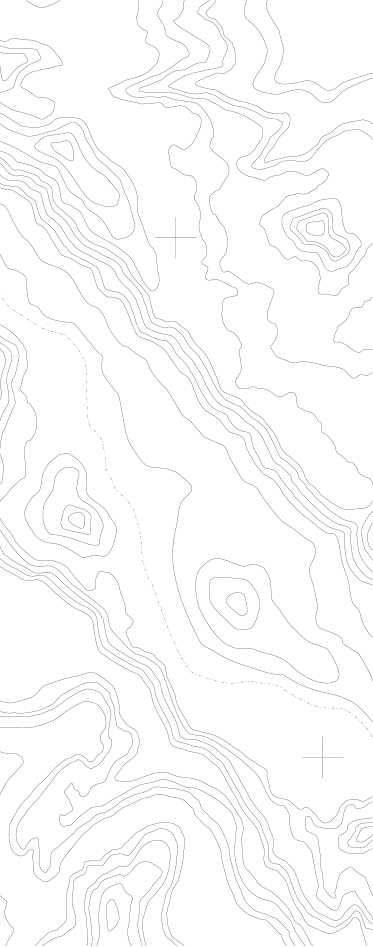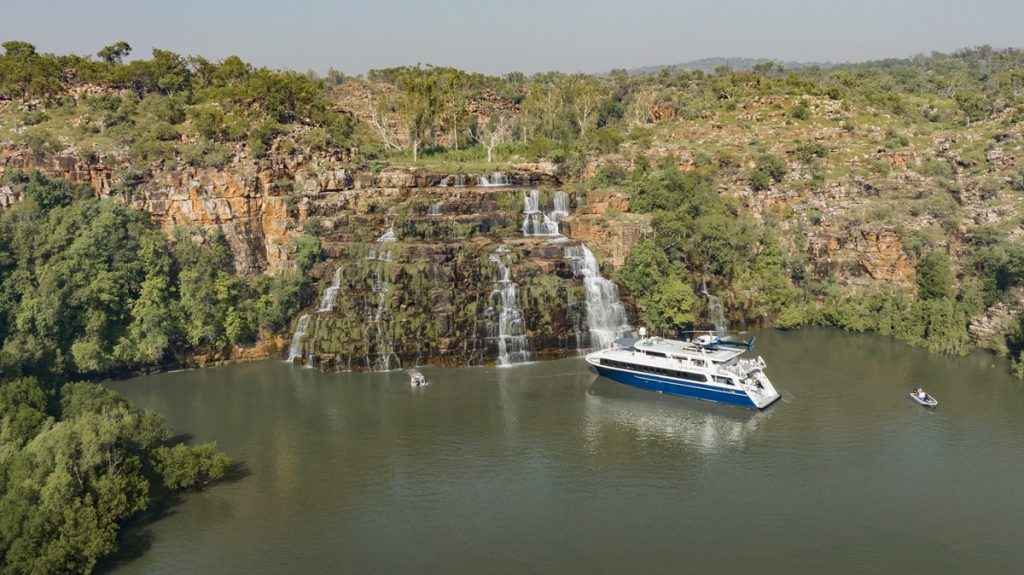Navigating the pristine waterways of the Kimberley reveals a landscape rich in biodiversity and steeped in ancient history. If you’re travelling through this remote wilderness, you’ll encounter a variety of wildlife… but none more commanding than the crocodile.
These apex predators are integral to the region’s ecosystem and truly embody the raw, untamed spirit of the Kimberley. If you’re wondering which types of crocodiles you’ll find on the Kimberley coast, we’ve got all the info you need.
Crocs in the Kimberley
Crocodiles thrive in the Kimberley’s rivers, estuaries, and coastal waters. These ancient reptiles have been a part of this landscape for millions of years, contributing to its complex ecological and cultural tapestry.
The presence of crocodiles in the Kimberley plays a pivotal role in maintaining the health of the ecosystem. As apex predators, they help balance populations of other species, which in turn supports the overall biodiversity of the region. Their activities influence the aquatic ecosystems, impacting everything from the fish populations to the distribution of aquatic plants.
Crocs are also significant to the Aboriginal people of the Kimberley, and feature prominently in local mythology and art, symbolising power and protection.
Saltwater crocodiles: kings of the water

Saltwater crocodiles, often referred to as ‘salties,’ are the largest crocodile species and the most formidable predators in their habitats. These impressive creatures can grow up to 7 metres in length and can weigh over 1000kg. It’s easy to see why these saltwater crocs dominate both the water and the land!
Climate adaptation
Saltwater crocodiles are highly adaptable and thrive in a variety of climates, ranging from the tropical monsoon climates of the Kimberley to the balmy coastal regions. Their ability to regulate their body temperature through behavioural means, like basking in the sun or retreating to the shade of cool waters, means they can dominate diverse environments. This adaptability is crucial for surviving the different temperatures and seasonal changes in the Kimberley.
Behavioural patterns
As apex predators, saltwater crocodiles show complex behaviours associated with hunting and territory. They’re known for their strategic hunting skills, using the water’s edge and their incredible stealth to launch sudden attacks on unsuspecting prey.
Their behaviour varies by age and size; while younger salties are more cautious and stick to smaller prey like insects and amphibians, adults can tackle significantly bigger prey, including larger mammals.
Hunting techniques
Salties are exceptional hunters due to their patient and calculated approach. They can remain still and nearly undetectable for hours, waiting for the right moment to strike. Their diet is varied, allowing them to exploit different food sources depending on what’s available. This feeding flexibility is critical for their survival in the wild expanses of the Kimberley.
Reproduction and lifecycle
The reproductive cycle of saltwater crocodiles begins with breeding season, which typically occurs during the wet season when water levels are high. Female salties lay eggs in carefully constructed nests made of vegetation, which provides warmth and protection through decomposition heat. The temperature of the nest determines the sex of the hatchlings; eggs exposed to temperatures of about 31.6 degrees Celsius or higher generally result in mostly male hatchlings, while lower temperatures around 30 degrees Celsius tend to produce females.
Freshwater crocodiles: the Kimberley’s quieter residents
Freshwater crocodiles, or ‘freshies,’ as they’re often known, are much smaller and less aggressive than their saltwater counterparts. These crocodiles are a distinct species native to the inland waters of northern Australia, including the Kimberley region in Western Australia.
Usually reaching lengths of up to 2.5 to 3 metres, freshies are much smaller than salties, with a narrower snout and smaller teeth.
Behavioural patterns
Unlike salties, freshies are not known to attack humans unless provoked or threatened. Their diet is primarily made up of fish, amphibians, and small mammals. They tend to favour the calm and shallow waters of rivers, creeks, and permanent freshwater bodies. They thrive in environments that provide sunlight for basking – a crucial activity for their ectothermic metabolism – as well as abundant food sources.
Their presence in these waterways is often an indication of good ecosystem health, as they require clean, clear water for hunting and breeding.
Hunting techniques
Freshies are skilled yet less aggressive hunters compared to their saltwater counterparts. Their small prey means they need to utilise quick strikes, usually from a stationary position. Their hunting technique is largely opportunistic – they often wait in shallow waters and pounce when a potential meal comes within range.
Reproduction and lifecycle
Freshies have a distinctive reproductive cycle closely tied to seasonal changes, mating in the late dry season and laying eggs at the onset of the wet season to avoid nest flooding. Females strategically build nests on riverbanks close to the water, with the temperature of these nests also determining the sex of the hatchlings.
After about 90 days of incubation, hatchlings emerge full independent, facing numerous predators as they navigate their early life in water, gradually learning to hunt and survive.
Best practices for exploring crocodile habitats
Exploring the Kimberley’s rich ecosystems where crocodiles are present can be thrilling, and it’s one of the things we love doing best on our Kimberley cruises! That said, doing so demands caution and respect for these powerful creatures.
- Always be aware of your surroundings, especially near water bodies. Crocs can be very discreet and may be closer than they appear! Information is your best defense; listen carefully to your guides and their safety briefings.
- Keep a safe distance from the water’s edge when walking near rivers, estuaries, and lakes where crocs are known to live. They can launch out of the water quickly and are a lot faster than they look!
- Don’t feed them! Feeding crocodiles can alter their natural behaviour and encourage them to associate humans with food – not ideal! Keep food and fishing bait stored securely and dispose of fish scraps appropriately.
- Be extra cautious at night! Crocs are more active during the night, so be careful and avoid the water’s edge.
- Take guided tours whenever you can. It’s better to be around the experts!
Ready to see these Kimberley predators in the flesh?
Embark on a True North Kimberley cruise to explore these ancient predators in their natural habitat, guided by our experts to ensure your adventure is a safe one.
Explore our luxury cruise itineraries today and start your adventure!







